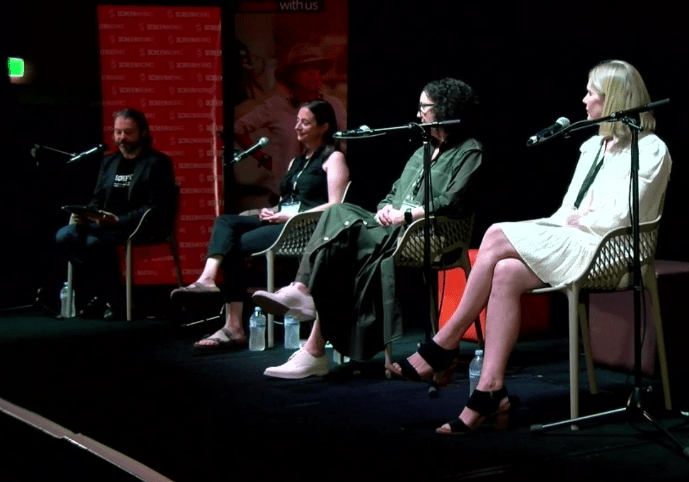International production may have a larger share of the limelight in Australia at the moment but its relationship with the local sector remains one of mutual benefit, according to a panel of screen agencies.
The impact of the country’s current popularity as a filming destination was dissected at the Screenworks Regional to Global Screen Forum last week as part of a session entitled ‘The Regional Renaissance – Going Global, Staying Local’.
A panel comprising Screen NSW head Grainne Brunsdon, Screen Queensland chief creative officer Jo Dillon, Screen Territory director Jennie Hughes, Ausfilm CEO Kate Marks, and moderator and Screenworks CEO Ken Crouch discussed the health of the industry in relation to the opportunities available across their respective jurisdictions.
When it came to the inbound productions stemming from Australia’s relative handling of COVID-19, Brunsdon was quick to dispel the suggestion that local growth was suffering as a result.
“No local production has missed out because money’s gone to an international production; they’re separate amounts of money.
“We got $175 million over five years for our Made in NSW Fund which is to attract international production but also local TV drama series and local feature films.
“We still have our core funding which is all about local production and industry development and audience development.”
“It is a myth that we are cannibalising one for the other.”
There have now been 12 projects lured to Australia since the government topped up the Location Incentive Program with $400 million last July, the latest of which – Universal Pictures rom-com Ticket to Paradise – will be filmed in Queensland.
For Jo Dillon, whose agency Screen Queensland supported the project via its Production Attraction Strategy, international production gave more than it took from a local perspective.
“In terms of skills development opportunities, you can’t really have one without the other,” she said.
“If you don’t have a strong base or well respected or well-regarded crew, which I think is true of all of Australia, Internationals don’t come.
“They love working here and they love working with our crews but if we didn’t invest in local content and if we didn’t invest in local production, that wouldn’t be the case.”
Under the Location Incentive program, film or TV producers get a cash grant of 13.5 per cent of what they spend on their production in Australia.
When combined with the existing 16.5 per cent Location Offset, this adds up 30 per cent incentive to shoot in Australia.
Marks said while significant, it was important to note that the location incentive offset was just one mechanism that is provided federally to the industry.
“One of the reasons for that myth [about international productions] being out there is that with the way the location incentive grant works, each time a production is attracted, it is announced along with the money that is given as part of that grant, so you see these big dollar values being put out,” she said.
“But this $400 million that was added to the location incentive last year is over seven years, so I think it is fair to say that considerably more money goes out federally each year to the Australian sector and domestic projects as well, it’s just that they don’t talk about it because the Producer Offset, like the Location Offset, is under tax secrecy, but the location incentive isn’t.”
Marks said there was now “real opportunities” for Australian creatives to work alongside the productions, highlighting the Netflix series Clickbait , produced by Matchbox Pictures and Tony Ayres Productions (TAP), as an example of the collaboration that is happening.
“What’s been interesting over the last eight months with the productions coming in is that of the 12 projects that have been secured for Australia, many have really significant Australian creatives involved,” she said.
“Whether it be Australian directors working on some of the episodes, or NBC working in partnership with Matchbox, some of which came under production services, while others such as Clickbait, were Matchbox-driven productions.”



